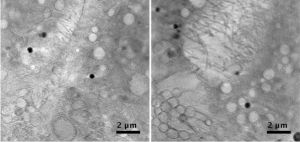-
El CSIC lidera cinco proyectos de I+D en biomedicina de la Comunidad de Madrid.
-
Los investigadores proponen nuevos biomateriales para el tratamiento del cáncer y terapias contra enfermedades cardiovasculares, renales y hepáticas
- Las iniciativas han obtenido la financiación de uno de los programas de actividades de innovación de la Comunidad de Madrid
El Consejo Superior de Investigaciones Científicas (CSIC) lidera cinco proyectos de innovación en biomédica seleccionados por la Dirección General de Investigación e Innovación Tecnológica de la Comunidad de Madrid (CAM). Más de cuatro millones de euros se destinarán a desarrollar nuevos biomateriales y sistemas bioactivos para terapias oncológicas y estrategias de detección, prevención y tratamiento enfermedades cardiovasculares, renales y hepáticas.
Los programas I+D de la CAM financian proyectos de excelencia investigadora y carácter interdisciplinar con capacidad para definir estrategias a medio y largo plazo. El objetivo final es generar conocimiento que dé soporte a la innovación regional. Así, el programa Biomedicina 2022 ha tenido en cuenta estas cualidades en los proyectos liderados por investigadores del CSIC en el Instituto de Investigaciones Biomédicas Alberto Sols (IIBM-CSIC-UAM), el Centro de Investigaciones Biológicas Margarita Salas (CIB), el Instituto de Ciencia y Tecnología de Polímeros (ICTP), el Centro de Biología Molecular Severo Ochoa (CBMSO-CSIC-UAM) y el Centro Nacional de Biotecnología (CNB).
Vigilancia del hígado
El investigador del CNB Jose María Carazo coordina el programa TomoXliver2, que plantea un estudio multidisciplinar para descubrir biomoléculas que sirvan para vigilar la salud del hígado, detectar las alteraciones que anuncien el inicio de la enfermedad y definir dianas novedosas contra las que dirigir nuevos fármacos. “El proyecto es eminentemente translacional (busca nuevas respuestas para trasladarlas a la práctica clínica), aunando a grupos clínicos con grupos especialistas en algoritmos de procesamiento de imagen”, indica Carazo. El proyecto tiene triple participación del CSIC, con los investigadores del CBMSO y el Instituto de Química Física Rocasolano (IQFR).
Proteger el funcionamiento renal
Lisardo Boscá, investigador del CSIC en el IIBM, lidera un proyecto (Cifra-Cor-Cm) quese centra en la búsqueda de estrategias nefroprotectoras para evitar el fracaso renal agudo de diferentes causas y procedencias. Se trata de síndrome grave por su alta prevalencia y mortalidad; especialmente cuando se complica por la disfunción de otros órganos, como el corazón. Así, la insuficiencia cardiaca puede aparecer tanto a corto como a largo plazo tras el fracaso renal agudo. “Por ello, ambas situaciones clínicas no deben considerarse como entidades diferentes, sino como fases de un proceso común y continuo en el que es posible la intervención nefroprotectora para prevenir los efectos adversos de esta patología renal”, indica Boscá.
Recuperando la inmunidad innata
María Cristina Vega, del CIB Margarita Salas, coordina un programa (Complemento 3-CM) que busca desarrollar métodos diagnósticos y terapias innovadoras para las enfermedades asociadas con la disfunción del sistema del complemento de inmunidad innata. “La sinergia entre los grupos de investigación fundamental y orientada y los grupos clínicos de Complemento 3-CM permitirá avances en el diagnóstico y la terapia de las enfermedades asociadas con el complemento, imposibles de alcanzar de manera individual. Las enfermedades asociadas con el sistema del complemento incluyen patologías prevalentes como la enfermedad cardiovascular y enfermedades raras como el síndrome hemolítico urémico atípico y las glomerulopatías C3”, explica Vega.
El programa está constituido por grupos del CIB Margarita Salas, UCM, IdiPAZ y CNM del ISCIII, y cuenta como miembros asociados a grupos de los hospitales La Princesa y 12 de Octubre, centros de investigación en biomedicina (UNAV, IDIBELL, UIB) y dos EBT del CSIC (Abvance y Secugen).
Contra la enfermedad renal crónica
Santiago Lamas, investigador del CSIC en el CBMS del Centro de Biología Molecular Severo Ochoa, coordina un proyecto (Innoren-CM) para combatir la enfermedad renal crónica y sus principales complicaciones a través de la comprensión de sus mecanismos de progresión, a la vez que desarrollar nuevas aproximaciones diagnósticas y terapéuticas. “Entre los objetivos de mayor alcance innovador se encuentran el desarrollo de modelos genéticos con ganancia de función metabólica para los ácidos grasos y la síntesis de nuevas moléculas destinadas a combatir la senescencia celular y mejorar el metabolismo”, expone Lamas. El proyecto está constituido por cuatro equipos adicionales de la UAM, UAH, USC-CEU y un grupo asociado de la FPCM.
Cuidar la piel de pacientes oncológicos
María Rosa Aguilar, investigadora del ICTP, lidera un proyecto que desarrollará nuevas soluciones terapéuticas para el tratamiento de la piel radiada en pacientes oncológicos, que se torna muy sensible y molesta. “Se combinarán nuevos biomateriales y sistemas bioactivos que proporcionarán un abanico de posibilidades que llevar a la clínica en el corto, medio y largo plazo”, señala Aguilar. En el consorcio participan cuatro grupos adicionales del Instituto de Química Médica la Universidad de Alcalá de Henares y el Hospital Universitario la Paz, además de tres empresas asociadas.
Comunicación CSIC






